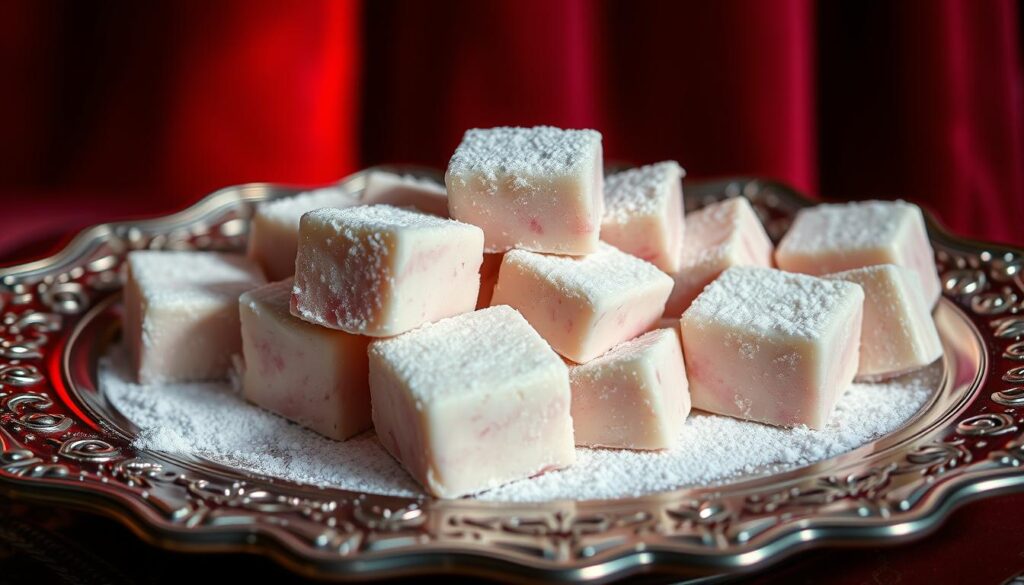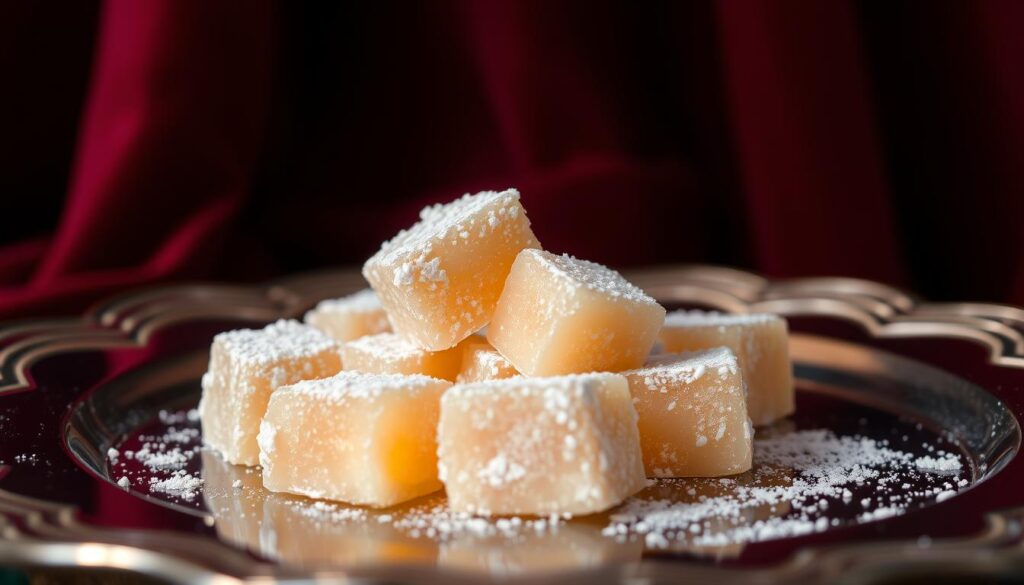In C.S. Lewis’s timeless classic, The Lion, the Witch and the Wardrobe, a pivotal moment unfolds when Edmund Pevensie encounters the White Witch, who tempts him with enchanted Turkish Delight. This iconic scene not only showcases Lewis’s mastery of narrative but also introduces themes of temptation and betrayal that resonate throughout The Chronicles of Narnia.
We will explore how this moment serves as a turning point in the narrative, setting the stage for Edmund’s subsequent actions and the unfolding drama. By examining the literary techniques Lewis employed, we gain insight into the enduring appeal of this memorable scene.
Key Takeaways
- The enchanted Turkish Delight represents a pivotal moment in The Lion, the Witch and the Wardrobe, symbolizing temptation and betrayal.
- Lewis’s use of the Turkish Delight as a tool for manipulation highlights the themes of control and deception.
- The scene has become an iconic moment in children’s literature, symbolizing the struggle between temptation and resolve.
- The analysis of this scene provides insight into Lewis’s narrative techniques and their lasting impact.
- The themes introduced in this scene resonate throughout The Chronicles of Narnia.
The Significance of the Narnia Turkish Delight Scene
The encounter between Edmund and the White Witch, facilitated by Turkish Delight, is a turning point in the narrative. This scene is crucial in understanding Edmund’s temptation and subsequent betrayal of his siblings.

Edmund’s Temptation and Betrayal
Edmund’s encounter with the White Witch represents a classic moment of temptation, where the immediate gratification of the delight overrides his better judgment and loyalty to his siblings. As noted in further analysis, this moment signifies the beginning of Edmund’s gradual corruption.
The White Witch’s Manipulation
The White Witch’s tactics, using gifts like the enchanted Turkish Delight to gain trust before exploitation, mirror real-world predatory behaviors. For more insights on the historical context of Turkish Delight, visit Historical Foods.
| Aspect | Description | Impact on Narrative |
|---|---|---|
| Temptation | Edmund’s desire for Turkish Delight | Leads to his betrayal of siblings |
| Manipulation | White Witch’s use of enchanted sweets | Exploits Edmund’s vulnerability |
| Consequences | Physical and emotional aftermath | Establishes Edmund as a flawed character |
By examining the psychological aspects of Edmund’s betrayal and the White Witch’s manipulation, we gain insight into the narrative’s exploration of forgiveness and growth.
Turkish Delight: More Than Just Candy
Turkish Delight, a confection steeped in history and mystique, plays a pivotal role in C.S. Lewis’s ‘The Lion, the Witch and the Wardrobe’. This sweet treat has captivated readers for generations, but its significance extends far beyond its taste.
What is Turkish Delight?
Turkish Delight, also known as Lokum, is a traditional Middle Eastern confection made from sugar, cornstarch, and fruit juice, often flavored with rosewater or lemon. The original Turkish word “Lokum” is derived from the Arabic words “luqma(t)” meaning morsel and “luqūm” meaning mouthful.
The Magical Properties in Narnia
In Narnia, Turkish Delight is enchanted, creating an intense craving in those who consume it. This magical property is a pivotal element in the story, as it is used by the White Witch to manipulate Edmund.
The real-world origins and composition of Turkish Delight are as fascinating as its role in Narnia. Let’s examine the history and sensory experience of this confection.
| Aspect | Real-World Turkish Delight | Narnia’s Enchanted Turkish Delight |
|---|---|---|
| Composition | Made from sugar, cornstarch, and fruit juice | Imbued with magical properties |
| Taste and Texture | Extremely sweet and sticky gelatinous pieces | Creates intense craving and addiction |
| Cultural Significance | Traditional Middle Eastern confection | Tool for manipulation by the White Witch |

By understanding the real and fictional aspects of Turkish Delight, we can appreciate the depth C.S. Lewis brought to his narrative. The contrast between the mundane reality of the candy and its mythical portrayal in the book adds a layer of complexity to the story.
Historical Context and Symbolism
The historical context in which C.S. Lewis wrote “The Lion, the Witch and the Wardrobe” significantly influences the symbolism of the Turkish Delight. During World War II, Britain faced severe sugar rationing, a factor that Lewis personally experienced and referenced in his letters.
Post-War Sugar Rationing in Britain
Sugar rationing began in 1940 and lasted until 1953, making sweets like Turkish Delight a rare luxury. Lewis’s personal experience with sugar shortages, as reflected in his letters, underscores the significance of Edmund’s temptation.
Biblical Parallels: Edmund as Judas
Edmund’s betrayal of Aslan for Turkish Delight mirrors Judas’s betrayal of Jesus for thirty pieces of silver, highlighting Lewis’s incorporation of biblical themes into his narrative. This parallel adds depth to the story, reinforcing its Christian undertones.

The Lasting Impact on Literature and Readers
As we reflect on the Narnia Turkish Delight scene, it’s clear that its impact extends far beyond the pages of C.S. Lewis’s classic novel. The scene has become an iconic moment in children’s literature, influencing popular culture and boosting Turkish Delight sales.
Its commercial impact and literary significance continue to be felt, with readers’ interpretations evolving as they mature.


